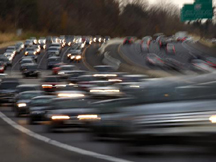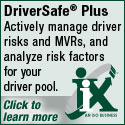Fremont Insurance Offers Advice For Holiday Travelers
 Print this Article | Send to Colleague Print this Article | Send to Colleague
 According to AAA, millions of Americans will choose to drive rather than fly to their family gatherings this year. Fremont Insurance issued a list to remind motorists about the dangers of winter driving and share some tips to help motorists arrive safely at their destinations. According to AAA, millions of Americans will choose to drive rather than fly to their family gatherings this year. Fremont Insurance issued a list to remind motorists about the dangers of winter driving and share some tips to help motorists arrive safely at their destinations.
"Slick, wet and snow-covered roads, as well as everything from downpours to hail to white outs are just a few of the things that drivers can expect to deal with," said Kurt Dettmer, Vice President of Marketing for Fremont Insurance. "These hazardous conditions, combined with increased traffic due to holiday travel, can lead to dangerous situations and drivers need to prepare accordingly."
- Before starting out, turn on your lights to increase your visibility to other motorists. Be sure to clear snow and ice completely from all windows, lights, hood and roof. In addition, law enforcement officials are warning that they will be on the lookout for "peephole drivers."
- Remember, posted speed limits are for dry pavement. Decrease your speed on icy or snow-covered roads and allow extra distance (at least three times the norm) between your vehicle and the vehicle in front of you.
- Watch the traffic well ahead for extra reaction time. Always drive defensively and give yourself a cushion of time to deal with wintry conditions and remember to use low gears to maintain traction, especially on hills.
- Stay well back of maintenance vehicles and snowplows and don't pass on the right. Use extreme caution when passing in a passing lane. Also do not cut quickly in front of heavy trucks. Remember they take longer to safely respond and come to a complete stop.
- Avoid abrupt lane changes. There may be a snow ridge between lanes. Also, the passing lane may be in worse shape than the driving lane.
- Brake early and gently to avoid skidding. It takes more time and distance to stop in adverse conditions. If your wheels start to lock up, ease off the brake. Do not pump anti-lock brakes. The right way is to stomp and steer.
- Watch for slippery bridge decks and other areas prone to becoming slick, even when the rest of the pavement is in good condition. Often a sign will remind drivers that bridge decks will ice up sooner than adjacent pavement, but even if there is no sign, drivers should remember to be cautious.
- Don't use cruise control or overdrive in wintery conditions. Even a slight depression of your brakes to deactivate can cause loss of control on hidden slippery patches
- Do not assume your vehicle can handle all conditions. Even four-wheel and front-wheel drive vehicles encounter trouble on winter roads. The false sense of security these vehicles offer can leave you less prepared to deal with an emergency situation when it occurs.
- Don't drive at all in adverse conditions if you can avoid it. If you can't, try to wait until the snow plows and sanders have been out. Always remember that it's better to arrive a few minutes late and be safe than to drive too fast for conditions and not arrive at all.
"If I had to give people just one bit of advice," said Dettmer, "it would be to simply slow down. It seems like everyone is in a hurry to get somewhere these days, particularly during the holiday season, and the faster you are going, the less time you have to react in an emergency situation."
   
|
|

 According to AAA, millions of Americans will choose to drive rather than fly to their family gatherings this year. Fremont Insurance issued a list to remind motorists about the dangers of winter driving and share some tips to help motorists arrive safely at their destinations.
According to AAA, millions of Americans will choose to drive rather than fly to their family gatherings this year. Fremont Insurance issued a list to remind motorists about the dangers of winter driving and share some tips to help motorists arrive safely at their destinations.








